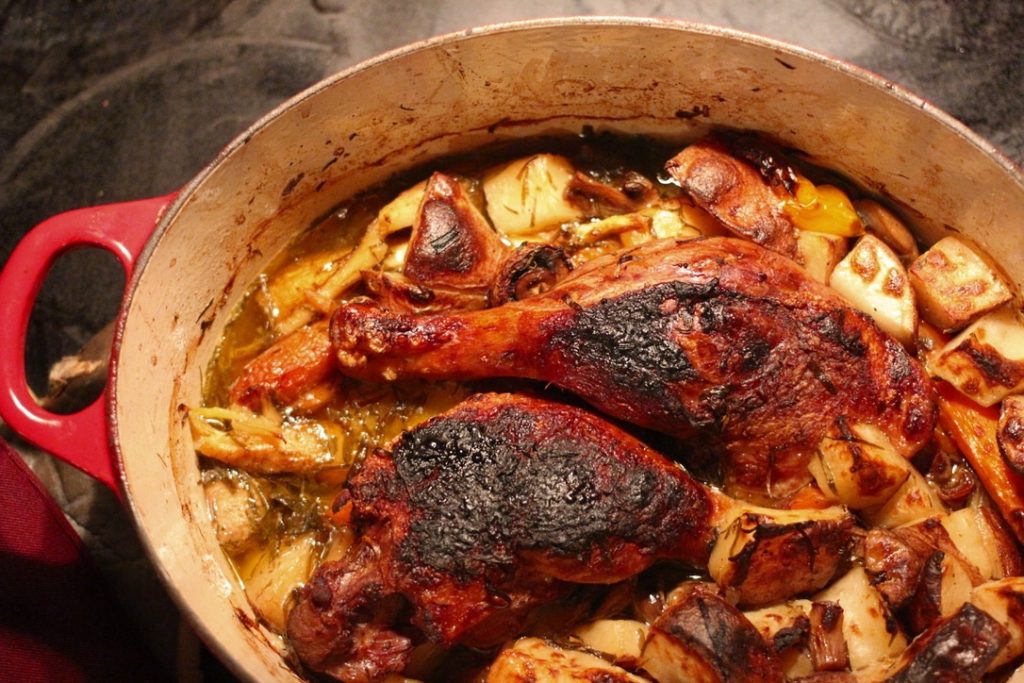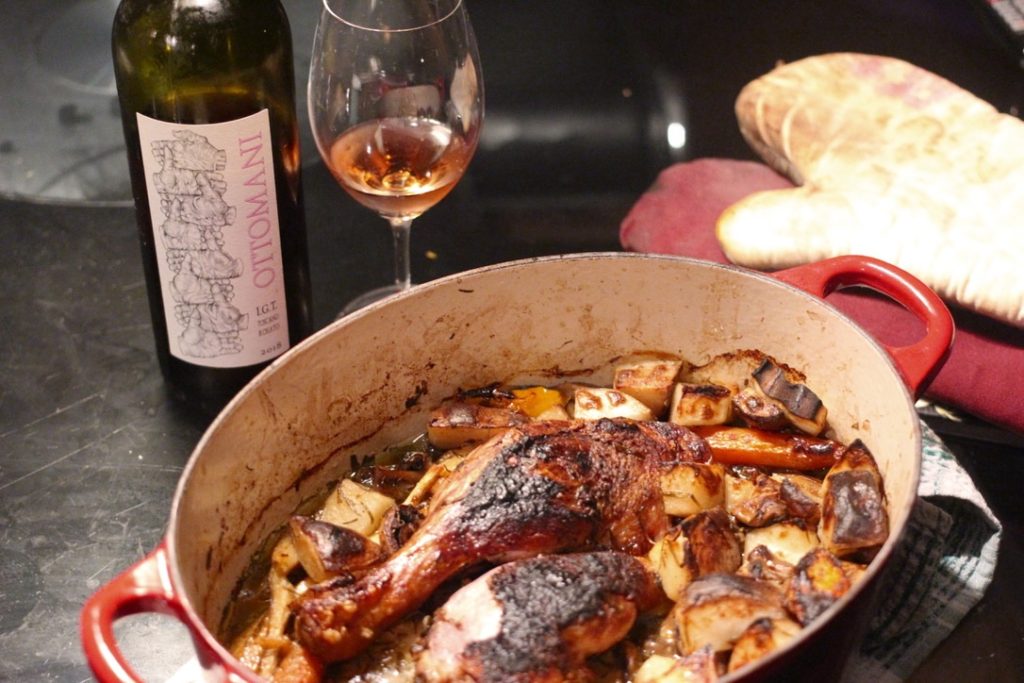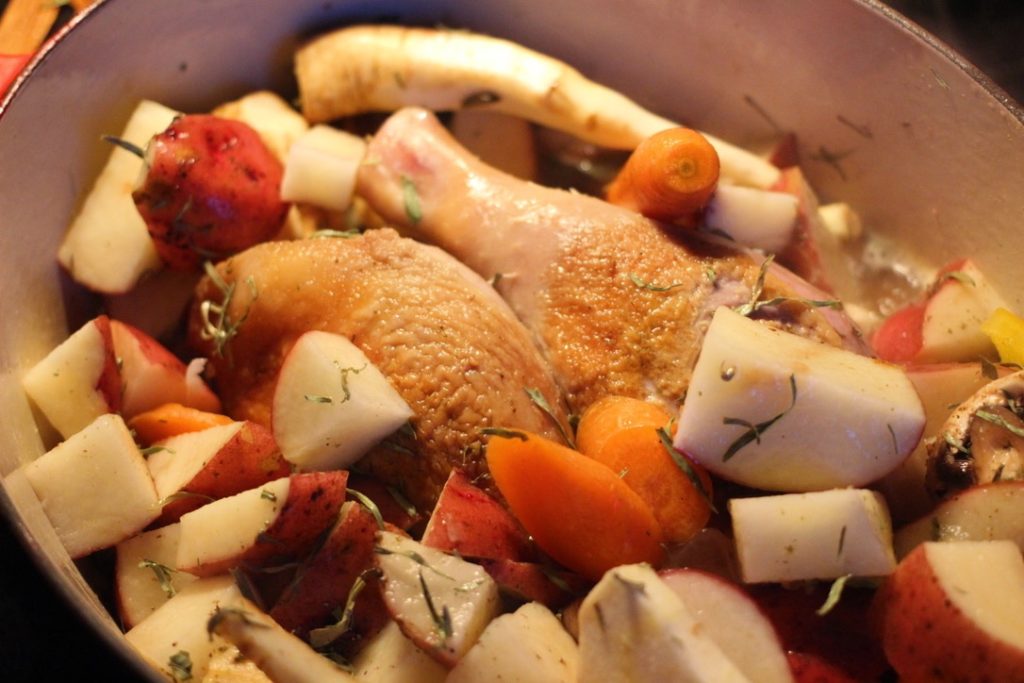
Are there meals that you dream about from before the days of social distancing? I often dream of one in particular. I was sitting into a beautiful new restaurant in NDG in Montreal two years ago with a platter of duck legs, breast, wings, sausage and duck-fat-cooked potatoes in front of me, accompanied by a bottle of natural Tuscan rosé.
I raved about it for more than a year. I even took my mother there a few months later when she came to town and we ordered the same platter and same wine. But the wine was different that second time. Instead of the strong smell of raspberries and the perfect duck pairing, it was funky and weird. It felt off, but I’d never sent a bottle back before. Instead, I started to doubt my memory. What if my memory of the wine was so off that I’d been completely wrong for the past two months as I raved about raspberries?
I think about that often as I try to remember what life – and food, from grocers to restaurants to dinner parties – was like before self-isolation. We are all fallible. I’m sure I remember flavours incorrectly sometimes. I’m sure I romanticize a taste, a food experience.
But I do believe that flavours and moments can forever engrave themselves on your memory. The way a first sip of Champagne tasted when you had something important to celebrate. The first bite of scallop nigiri after a long run. The butterscotch (or chocolate or strawberry) sauce on your ice cream sundae on that hot summer day. Maybe the hit of sugar in your morning cereal when you were a kid. Or maybe the homemade tomato sauce that someone cooked gently, for hours, just for you, for dinner one evening.
Turns out that at that meal with the duck and the rosé, I was right. The server came over and tried the wine. She wasn’t sure, so she asked the owner. He confirmed that it was corked. So they brought us another bottle.
And then, all of a sudden, there they were: the raspberries.
A year later, I met the winemaker of that rosé for the second time at a natural wine salon in Montreal. I told him how much that wine meant to me. I bought a case. I even offered a couple bottles to friends, but kept a handful for myself, holding on to them for special moments.
I don’t believe that rosé is for spring and summer only. I believe duck and raspberries should be enjoyed year-round. Even in quarantine. Maybe especially in quarantine, when you want comfort and joy and memories of happier times.
Sitting in restaurants. Remember that? Dinner with friends. Servers placing meals in front of you. Restaurants, in general. (The one where my duck memory took place closed months before all this happened; I’m happy it didn’t have to live through this.) Cheers-ing where there’s a clinking sound instead of the dead air of Zoom, Skype or FaceTime. (Do we still need to look in each other’s eyes when we digitally cheers?)
I thought about saving this wine for after all this ends, but I actually now is the perfect time enjoy a bottle. The desire to make this, to relive that duck and rosé food memory, comes from the same desire to remember a great meal, which I think many people can relate to right now. So I broke out my Le Creuset and bought some duck legs. I slipped in some wine, dried tarragon, potatoes and carrots. And when it was ready, I sipped rosé and tasted raspberries and duck… and comfort.

Slow-Braised Duck Legs in Rosé
If you can’t find this exact rosé or don’t want to wait for it to arrive (despite the joys of delayed gratification), use a fruity but dry rosé or red of your choice. Have some fresh raspberries on the side if you really want that fruit flavour.
Serves 2
2 duck legs
1 tsp salt
1/2 tsp black pepper
2 branches celery, chopped
1 leek or onion, chopped
4 large carrots, chopped
1/2 cup Ottomani rosé or other fruit and dry rosé or red wine
3 cups chicken or vegetable broth
1/4 cup fresh or (loosely packed) dried tarragon
1 bay leaf
4 cups chopped potatoes, parsnips and/or white turnips
- Render the excess fat in the duck legs by heating them over medium-low heat in a large Le Creuset or casserole dish (or large oven-safe pot, or a large skillet and then transfer everything to a baking dish later if you don’t have a dish that can go on the stove and in the oven). The duck skin shouldn’t burn because the fat will start melting quickly. Pour off the excess fat into a jar and keep turning the duck legs until most of the fat has rendered. Remove the duck legs to a plate lined with paper towel and pour out all but a tiny bit of the duck fat (you can reserve the jar of duck fat in the fridge for up to a year or so and use it for anything from roasted vegetables to cookies – yes, seriously).
- Sprinkle the reserved duck legs all over with half the salt and pepper. Add the celery, onion an carrots to the skillet or pot and sprinkle with the remaining salt and pepper. Cook the vegetables over medium heat for 5-8 minutes, until softened. Add the wine to deglaze, scraping up the sticky bits. Then pour in the broth and add the tarragon, bay leaf and potatoes. Place the duck legs on top, cover and place in a 300˚F oven for 1 hour.
- Stir in any protruding vegetables, but keep the duck legs on top. Bake for another 45 minutes, this time with the lid off so the duck legs brown on top. If you want the skin crispier, put it under the broiler for a few minutes, watching carefully and setting the timer so it doesn’t burn. Don’t walk away. Don’t start a SKYPE call. Don’t check the latest COVID-19 news.
- To serve, scoop out some of the vegetables and a duck leg each and enjoy with a glass of that rosé and some new memories.


Leave a Reply